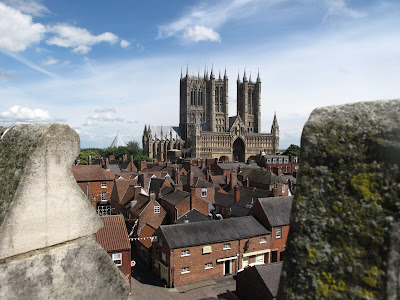Back home in Helensburgh

We've made it! Our 'Walk of Ages' didn't take us ages at all as, in a mere 20 days, the choir members have chalked up the 688.96 miles needed to make it all the way from Canterbury to Helensburgh, 'arriving' at our own home parish church. We do hope you have enjoyed sharing our virtual journey with us as much as we have enjoyed taking part in the challenge. Our aim, however, wasn't just to have fun, but to raise as much money as we can for MacMillan Cancer Support. We want to thank everyone who has generously given to our cause and ask anyone else who is able, to consider making a donation through our Virgin Money Giving page . The Choir intend to take advantage of the easing of some restrictions to gather together on Sunday afternoon to take one final stretch of our legs in walking locally from the Pier to Helensburgh Parish Church in the Square. It will be an emotional reunion for us all as, although we have faithfully met together each week for the las...





